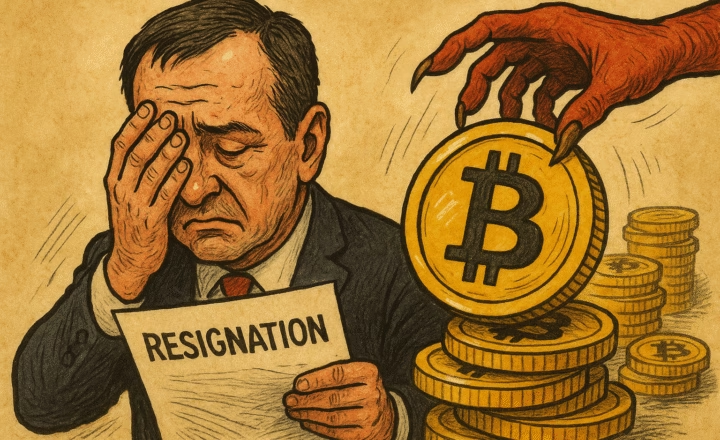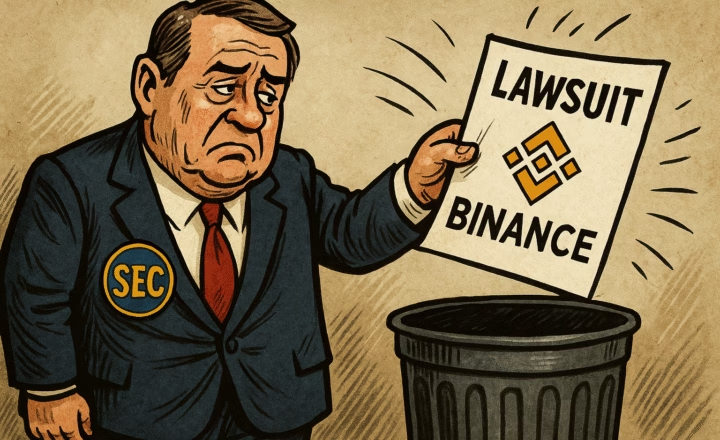Market Overview: BTC and ETH Decline, Market Struggles
The cryptocurrency market remains sluggish, with Bitcoin (BTC) and Ethereum (ETH) continuing their downward trend. As of the morning of February 26, BTC is trading at around 13.1 million yen (approximately $88,000), down 4% in the past 24 hours, marking a three-and-a-half-month low. ETH has also dropped by 0.4% to around 370,000 yen (approximately $2,500). Many major altcoins have followed suit, causing the total market capitalization to decrease by approximately 13% since the beginning of February. This downturn has heightened investor caution.
However, some altcoins have shown resilience. Ripple (XRP), for example, rebounded slightly after the previous day’s sharp decline, trading at 340 yen (approximately $2.30), up 1.8% in the last 24 hours. Ethereum also saw signs of stabilization after its earlier drop. This divergence suggests that while Bitcoin leads the decline, certain altcoins remain relatively strong, creating a mixed market environment.
Reasons for the Market Stagnation: Macroeconomic and Regulatory Factors
Several factors contribute to the market’s sluggish performance:
- Macroeconomic Headwinds: Uncertainty surrounding U.S. economic policies has led to risk aversion among investors. The Trump administration’s additional tariffs on imports have heightened inflation concerns. Additionally, speculation about interest rate cuts has created market instability. The Nasdaq Composite Index fell by 3% at one point in mid-February, with Bitcoin following suit. Macroeconomic uncertainties and inflation risks continue to weigh on crypto markets.
- Regulatory Uncertainty: In Japan, financial regulators have announced plans to classify cryptocurrencies as “financial products,” which may lower tax rates from 55% to 20% but could also introduce stricter oversight. In the U.S., the Securities and Exchange Commission (SEC) has dropped its lawsuit against Coinbase, signaling a shift in regulatory stance. However, global regulatory uncertainty still limits investor confidence.
- Security Concerns and Exchange Risks: A major hacking incident at Bybit, a leading crypto exchange, resulted in a loss of 401,000 ETH (approximately $1.5 billion). The attack, attributed to the North Korean hacking group Lazarus, caused panic selling across the market. The event highlighted ongoing security vulnerabilities in the crypto sector, exacerbating selling pressure.
- On-Chain Data Suggests Weak Demand: Data from CryptoQuant indicates that Bitcoin’s apparent demand (30-day total movement) has dropped from 279,000 BTC in late 2023 to around 70,000 BTC today. U.S. Bitcoin ETF inflows have also slowed significantly, with a daily net outflow of 1,000 BTC compared to an inflow of 18,000 BTC last November. This decreasing liquidity and demand suggests a weakening market.
- Whale Selling Pressure: Large Bitcoin holders (“whales”) have accelerated profit-taking, leading to intensified selling pressure. Analysts suggest that institutional investors may have begun reducing their holdings, further accelerating the decline.
These factors combined create a “perfect storm” for the crypto market, making it difficult for prices to rebound.
Top Gainers: Cryptos Defying the Market Trend
Despite the overall market stagnation, some cryptocurrencies have managed to rise, driven by positive developments or strong fundamentals.
- Ripple (XRP): XRP has shown relative strength, up 1.8% over 24 hours. Its recovery follows a sharp decline, suggesting technical buying. Additionally, XRP’s legal victories in the U.S. have bolstered investor confidence. Expectations of increased real-world usage in international remittances also contribute to its stability.
- Chainlink (LINK): Chainlink’s native token, LINK, has shown resilience due to its growing adoption in traditional finance. The project recently completed a successful pilot with the U.S. securities clearing agency DTCC, integrating its interoperability protocol “CCIP.” LINK surged over 7% following the news and remains supported by strong fundamentals and institutional partnerships.
- Mask Network (MASK): MASK, a Web3 social networking protocol, has gained traction as interest in decentralized applications grows. The token has been among the top gainers in the past 24 hours, benefiting from strong community support and increased adoption of decentralized social media solutions.
- Core DAO (CORE) & Nexo (NEXO): CORE, a new Layer 1 blockchain, has gained investor attention due to its high scalability. NEXO, a lending platform token, has seen buying interest following positive regulatory developments.
These assets stand out due to project-specific catalysts, regulatory clarity, or increased adoption, attracting capital even in a declining market.
Investor Sentiment and Future Outlook
Investor sentiment remains cautious, with macroeconomic uncertainty and regulatory challenges contributing to risk aversion. JP Morgan’s latest report states that “the crypto market currently lacks short-term positive catalysts,” highlighting weakened institutional demand.
However, long-term prospects remain optimistic. Historically, Bitcoin has exhibited post-halving bull cycles, and some analysts anticipate a potential market recovery in the latter half of 2025. Increased adoption by institutional investors and regulatory clarity may improve conditions.
Despite short-term volatility, long-term investors continue to view downturns as buying opportunities. As macroeconomic conditions stabilize and regulatory clarity improves, the crypto market may regain momentum. Observing on-chain data and regulatory developments will be crucial for identifying future trends.










